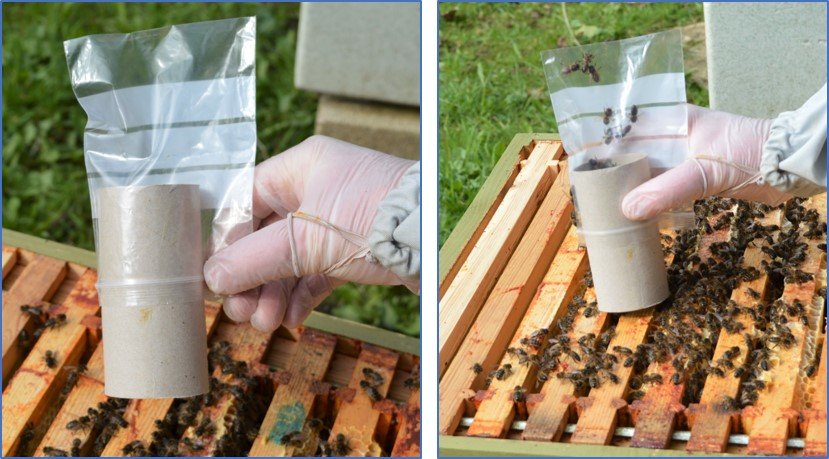How to collect a sample of honey bees for disease analysis
The following method outlines a simple, effective and humane way of collecting a sample of approximately thirty honey bees. It is ideal for collecting a sample for adult bee disease analysis, as part of your spring colony inspections.
You will need a small plastic bag. A little “zip-lock” bag is perfect, but a small food bag or coin bag will be fine. You will also need a short tube. The pictures show a toilet roll tube. Alternatively, the outer sleeve of a matchbox, short piece of plastics pipe or a piece of rolled up card would be fine too.

The opening of the tube is moved around the top of the brood frames. The bees’ instinct is to go “up and into the dark”. A number will investigate the inside of the dark tube and walk into the bag. You will be able to see bees in the bag and inside the tube. Take your time and be gentle. The idea is to let them investigate and not to push them in.
Making your move to collect your sample of bees
Once you think you have approximately thirty bees in the bag and tube you carry out a single, smooth, swift action, to do the following:
- Turn the bag/tube upside down
- Give a single downward jolt to dislodge any bees in the tube into the bottom of the bag
- Remove the tube and seal the bag

The Result – A sample of honey bees
The result should be a sample of approximately thirty bees, which can be used for adult honey bee disease diagnosis. Make sure the queen is not in there!

And Finally
It is unfortunately necessary to kill the sample of bees to inspect for some of the adult diseases. One of the simplest and humane ways of doing this is to put the sample into the freezer overnight at minus 18 Degree C.


